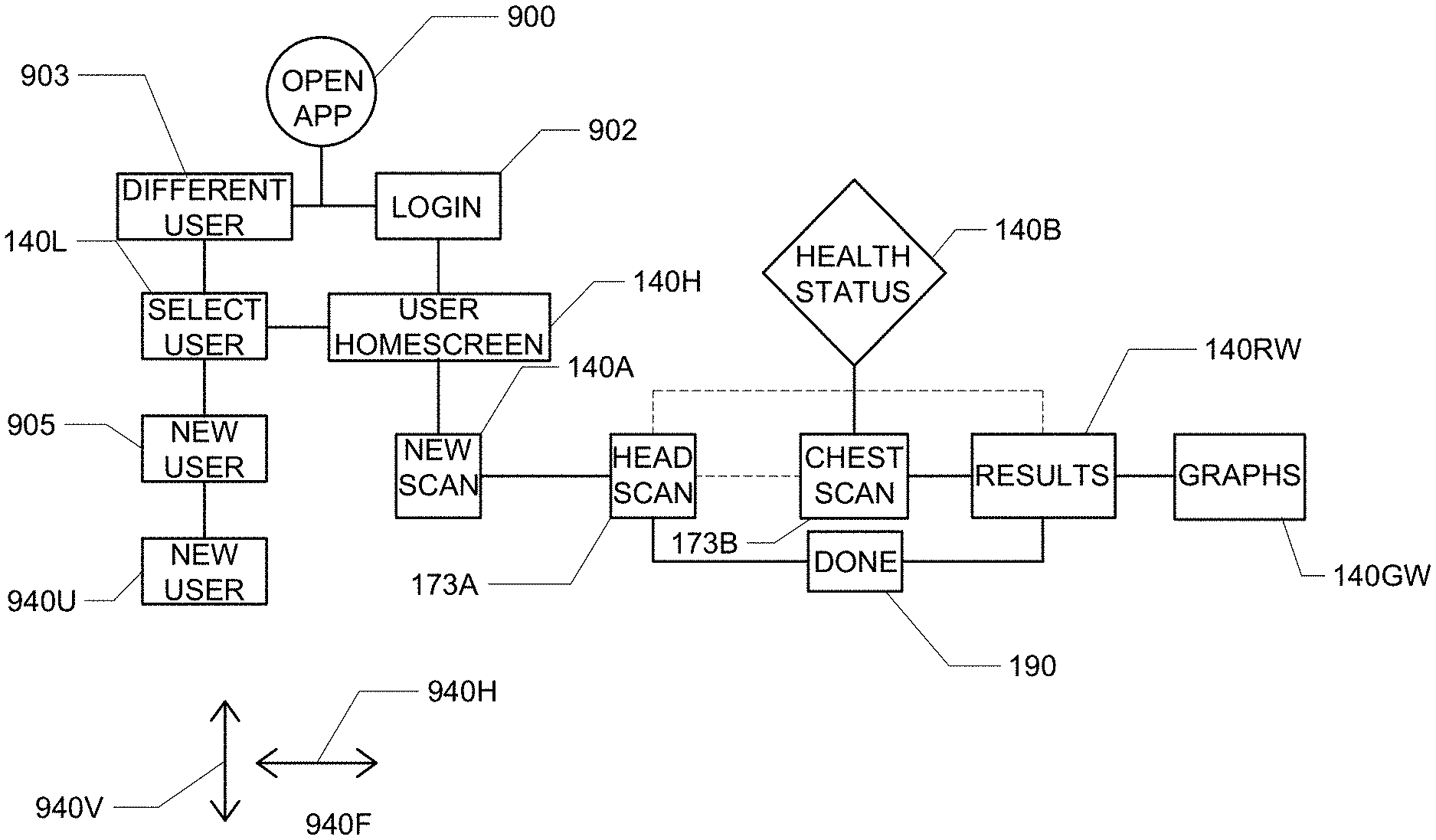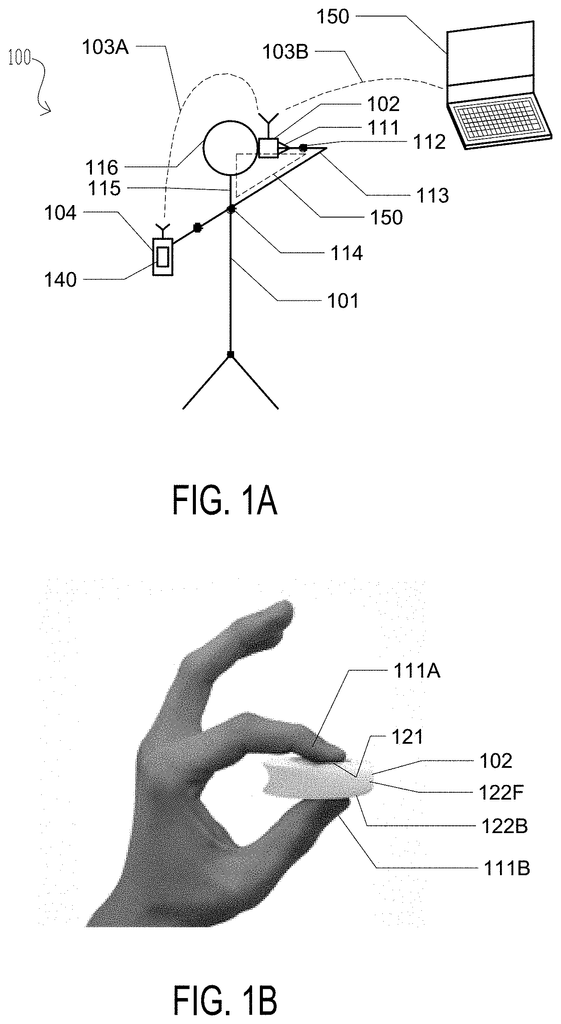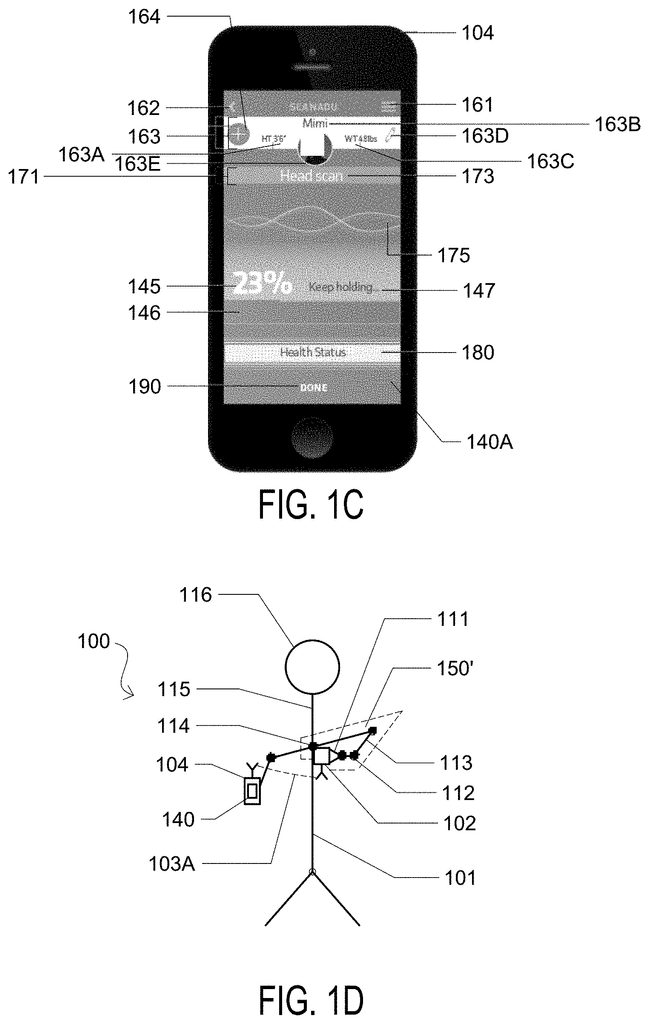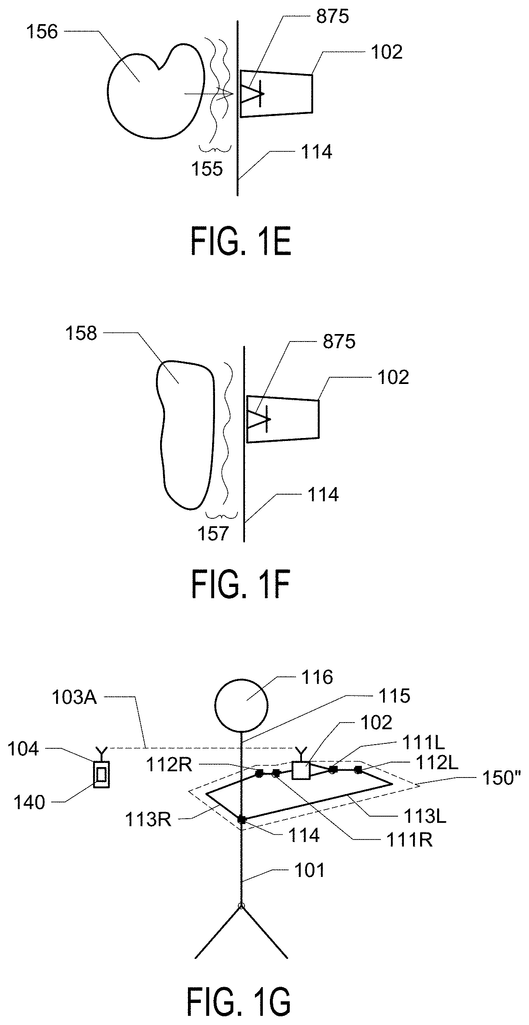Invented by Walter De Brouwer, Alexander Cristoff, Scott Thomas, HealthyIo Ltd
Personal medical record keeping refers to the practice of individuals maintaining their own health records, including medical history, test results, medications, and other relevant information. Traditionally, this information was stored in physical files or relied on the memory of patients. However, with the advent of electronic health records (EHRs) and the widespread use of smartphones and other digital devices, personal medical record keeping has become more accessible and efficient.
One of the key drivers of this market is the growing demand for patient empowerment and engagement in healthcare. Patients are increasingly taking an active role in managing their health and are seeking ways to access and control their medical information. Personal medical record keeping systems provide individuals with the ability to securely store and manage their health records, enabling them to make informed decisions about their care.
Another factor contributing to the growth of this market is the increasing focus on interoperability and data exchange in healthcare. With the implementation of EHRs in healthcare facilities, there is a need for systems that can seamlessly integrate with these records and allow for the transfer of information between patients and healthcare providers. Personal medical record keeping solutions that offer interoperability features are in high demand, as they enable the sharing of data across different platforms and healthcare settings.
Furthermore, the COVID-19 pandemic has highlighted the importance of personal medical record keeping. As individuals seek to manage their health during these uncertain times, having access to their medical information becomes crucial. Personal medical record keeping systems that offer telehealth capabilities, remote monitoring, and real-time updates have seen a surge in demand, as they allow patients to receive virtual care and stay connected with their healthcare providers.
The market for systems, methods, and apparatus for personal medical record keeping is highly competitive, with numerous players offering a wide range of solutions. Some companies focus on developing standalone mobile applications that allow users to store and access their health records on their smartphones. Others provide cloud-based platforms that enable individuals to securely store and share their medical information with healthcare providers.
In addition to the commercial market, there are also open-source initiatives and government-led efforts to promote personal medical record keeping. These initiatives aim to provide individuals with free or low-cost solutions to manage their health records, ensuring that everyone has access to this essential tool.
In conclusion, the market for systems, methods, and apparatus for personal medical record keeping is experiencing significant growth due to the increasing demand for patient empowerment, interoperability, and the need for remote healthcare services. As technology continues to advance and individuals become more engaged in their healthcare, the importance of personal medical record keeping will only continue to grow.
The HealthyIo Ltd invention works as follows
The disclosures relate to systems, methods and apparatus for aggregating vital signs data and/or diagnostic test results performed on a user, as well as medical data and user parameters, into a single record. In one example, receiving periodic vital signs and/or test results of a user, receiving medical data as a result of a medical exam of the patient by a healthcare practitioner, receiving user parameters, aggregating these data into a single record, storing this single record in a database for personal medical records, and finally, receiving the parameters of the patient. Calculation of life expectancy is possible. The user can set goals to increase their life expectancy by comparing the data over time with medical standards.
Background for Systems, Methods, and Apparatus for Personal Medical Record Keeping
Healthcare is an essential part of modern society. It has allowed people to benefit from the most recent technological advances, which are protected by a well-established regulatory system. Medical practitioners have also developed into highly specialized subfields and fields. Medical practitioners used to keep medical records and charts for their patients. Many patients do not understand the medical records and charts they have. It may partly be due to the complicated terminology used by the medical profession. It may be partly due to the fact that the patient didn’t keep his or her medical records.
Patients often change their doctors over time. As patients age and/or consult with different doctors, medical records and charts are often not transferred. Patients may not be able to recall their previous medical procedures in order to tell their new doctor what they have been through. The next doctor that a patient consults may not be aware of the previous procedures performed by a previous doctor.
Prior medical history can be useful to diagnose future ailments of a patient, and help make better health care decisions. It may be useful to consult the medical histories of family members in order to diagnose future ailments. When parents or grandparents die, their medical histories are often lost to the living. “Memory of ailments a parent or a grandparent might have suffered often fades with time.
It is important to help patients better understand their health and keep a medical record.
The claims below summarize the embodiments of the present invention. If a summary of the invention is needed, it can be described in terms of methods, systems and apparatus that include a medical data base to keep personal medical records.
This summary is intended to present the overall concept of the invention. It should not be interpreted in a way that limits the scope of claims.
Many alternative embodiments are possible and contemplated. These include those described in the detailed embodiments. However, they also include alternatives that have not been explicitly shown or described, but which would be obvious variations or obvious contemplated by a person of ordinary skill after reviewing this disclosure, in conjunction with other information. It is also contemplated, for example, that features described and shown in connection with one or more embodiments can be combined with another embodiment despite not being explicitly shown and explained in that combination.
The reference numbers can be repeated in order to increase efficiency. They are meant to represent the same features across different embodiments. However, these features may include certain differences between embodiments that would be obvious to a person of ordinary ability if they were specified or if the differences were clearly visible.
It’s desirable that consumers take more control over their basic health, and work with primary care providers to provide personalized healthcare. Vital signs scanners can be used almost anywhere and anytime to scan vital signs. The vital signs scan can be transferred to a wireless portable multifunction device such as a phone to store and display the results over time. The vital signs scan allows consumers to be more in control of their basic health, and to work with PCPs for personalized healthcare.
The vital signs scanner is a tool that allows the user to measure multiple vitals signs at once. The vital signs scanner makes it easy to scan multiple vital signs at once. The data from the vital signs scanner is sent to a portable multifunction touchscreen device owned by the user, such as a smart phone. The data is transferred to a user’s own portable multifunction touch screen device, e.g. “The portable multifunction device displays the scan results using an intuitive and easy to understand user interface, thanks to the vita signs scanning program.
The vital signs scanner device is a way to scan vital signs and provide the missing information so that a person can manage their own health. The vital signs system and scanner not only scans vital signs, but also records the user’s vital sign measurements over time and the trends. The vital signs system and scanner allows easy access to vital measurements, such as blood oxygenation levels, blood pressure, pulse rate, etc., almost anywhere, at any time. The vital sign scanner and system allows users to share vital signs data that is up-to date with their PCP in order to diagnose medical conditions more accurately. Even more important, the sharing of trends and history of vital sign data before and after a disease with a user’s PCP could provide clues as to the cause of the illness and not only indicate its symptoms.
The personal wireless vital sign scanner is a combination of aesthetics and functionality. The portable wireless vital signs scan is light and fits easily in one hand. With just two fingers on one hand, the personal wireless vital sign scanner can be operated and held. With the other hand, the user can hold a smartphone running a vital sign scanning app to control and view scanning results. The vital signs of a user’s body can vary at different times throughout the day. “The personal wireless vital sign scanner is small, light and aesthetically pleasing, so a user might want to take it along with them in order to perform multiple vital signs scans throughout the day, over several days.
A portable vital sign scanner and system could prove useful to healthcare professionals. Patients could, for example, scan their vital signs in a busy clinic, hospital or doctor’s office rather than waiting in long lines to receive a simple checkup. The scans of the patients are then uploaded onto a server in the clinic, hospital or office. These self-obtained scans of vital signs of patients are uploaded to a computer, allowing medical assistants and nursing staff, who would normally be checking vital signs, to spend more time treating patients’ ailments.
Self-obtained scans of vital signs can also be used to triage patients who are waiting for medical attention. A self-obtained scan that shows an irregular or elevated heart rate could alert hospital staff to give this patient immediate attention or at least higher priority than other patients in the queue. The self-obtained scans can be used to give a clinic staff a better understanding of the patient’s condition and adjust the schedule accordingly.
Measurements taken by a vital sign scanner can be added to a personal medical record maintained by the user throughout his or her lifetime.” Now, we provide more information on a vital sign scanner and a system for vital signs scanning.
Referring now to FIG. 1A, a diagram illustrating a vital signs scanning system 100 is shown. The scanning system 100 includes a portable wireless vital signs scanner 102 and a portable wireless multifunction device 104 in wireless communication with each other over a wireless communication channel 103A. The vital signs scanner 102 includes a plurality of sensors designed to read vital signs from a user’s body 101. An instance or snap shot of vital signs, such as temperature, heart rate, blood oxygenation or SpO2, ECG (electrocardiogram), and possibly stress levels, all synchronously measured, can be reported to the device 104 by the scanner 102 in less than a minute. Exemplary methods and algorithms for determining one or more of these vital signs from the sensor data are described in International Application No. PCT/US2013/061046, filed by Scanadu Corporation on 19 Oct. 2012, having international publication no. WO 2013/066642, entitled AUTOMATED PERSONAL MEDICAL DIAGNOSTIC SYSTEM, METHOD, AND ARRANGEMENT, claiming priority to U.S. Paten No. 61/549,134 filed on 19 Oct. 2011, and is hereby incorporated by reference.
The algorithms and processes disclosed by International Application No. PCT/US2013/061046 are based upon one or more of the following references (all of which are incorporated herein in their entirety): Pulse transit time: an appraisal of potential clinical applications, Thorax 1999; 54:452-457 [doi:10.1136/thx.54.5.452] [http://thorax.bmj,com/content154/5/452.full]; U.S. Pat. Nos. 6,723,054; 6,527,728; U.S. Publication No. Publication No. Publication No. 2003/0199771. Severinghaus John W. and Honda Yoshiyuki, “History of Blood Gas Analysis”, April 1987. VII. Pulse Oximetry, Journal of Clinical Monitoring #2: 135-138; Millikan, G. A. (1942). The oximeter, an instrument to measure continuously oxygen saturation of arterial blood in the human? Rev. Sci. Instrum 13 (10): 434-44 [doi:10.1063/1.1769941]; U.S. Pat. Nos. Nos.
The integration of multiple sensors with scan quality algorithms makes it possible to monitor and control the interactive scanning processes. This will provide a great experience for the user.
The wireless vital sign scanner 102 can perform vital signs scanning and display results in less than a minute. In general, scans can be completed within ten seconds. The duration of a scan session can depend on how well the user uses the scanner 102. If the user is moving too much, for example, during the scanning process, the session may last longer because the device 104 will prompt the user to stay still.
Different types of scans can also take a different amount of time. In a ten-second standard scan, the scanner can be held up to the forehead of a user. This allows for measurements such as blood pressure, ECG, temperature and 402. Vital signs, such as heart rate variability and blood pressure (related to stress), can be recorded during a 30-second extended head scan. For a 30 second chest scan, the respiration rate of a user and their body sounds can be collected or measured. The scanning sessions, in any case are short and convenient.
Short scanning session have many advantages. Short scanning sessions allow users to quickly take a break from their everyday activities and perform a scan at any time. The rapidity and ease of a vital sign scan will encourage users perform it multiple times per day. This will provide more accurate and complete trending data. “The invention is a consumer-oriented scan that can be used anywhere and anytime to measure multiple vital signs in seconds.
Click here to view the patent on Google Patents.





